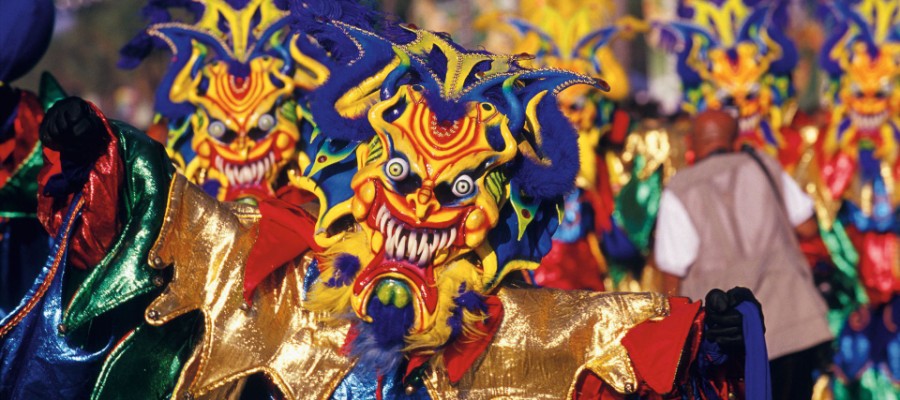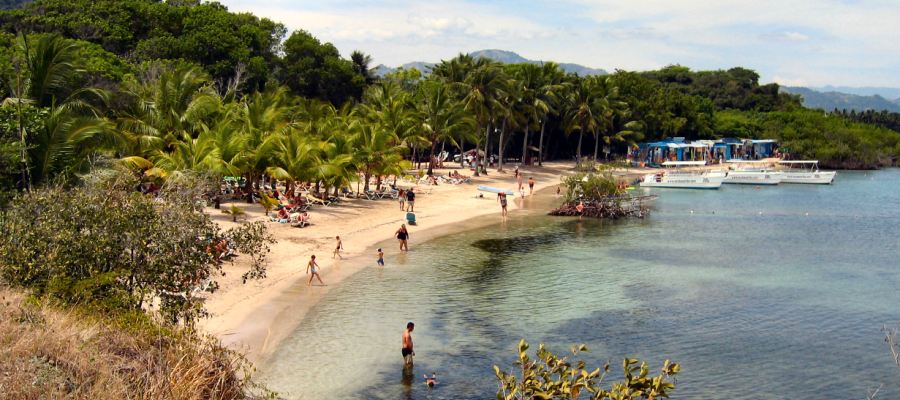The number of things you can do in the Dominican Republic is simply endless. Most tourism destinations offer an incredible variety of …
The number of things you can do in the Dominican Republic is simply endless. Most tourism destinations offer an incredible variety of restaurants and nightlife. The larger Dominican cities host different events and festivals all year round. You can shop for souvenirs, participate in some action sports, take a sight-seeing tour, or even get married.
Be dazzled by the Columbus Lighthouse
This colossal cross-shaped monument to Christopher Columbus on the south coast was built to commemorate the 500th anniversary of the discovery of South America. It projects a cross-shaped beam of light into the sky, visible from as far as neighbouring Puerto Rico. Today, you can visit the ‘lighthouse’, which doubles as a museum, whose exhibits include a sarcophagus supposedly containing Columbus’ remains.
Catch some baseball
Baseball isn’t so much the Dominican national sport as the national obsession – male and female, young and old, they’re all hooked. The professional domestic season, featuring six teams from across the country, lasts from October until February, providing a chance to experience the game in all its noisy, rum-fuelled glory.
Dance, dance, dance
Throw yourself into Santo Domingo’s nightlife by dancing to down-and-dirty merengue with the locals along Avenida Venezuela’s row of nightclubs and ‘super-colmadons’ – liquor stores-cum-dance halls. The city’s Malecón boardwalk has a number of further lively options, and there are several steamy nightclubs in the Zona Colonial, which offer live jazz and Latino beats.
Drop in on Columbus junior’s family home
Santo Domingo’s Zona Colonial is a World Heritage Site, where you can explore some of the most historic buildings in the Americas. The Alcazar de Colón was the palatial residence of Diego de Colon, son of the explorer and former Viceroy, completed in 1512. Equally unmissable is the Catedral de la Primada, the oldest Cathedral in the Americas, completed in 1540.
Go mountain biking
The country’s crumpled mountainous interior makes for great biking terrain, with the Cordillera Septentrional a particularly popular choice. Specialist agencies such as Iguana Mama run cycling tours of the countryside, with bikes and all equipment included. The best time to go mountain biking is during the dry season, from June to October, particularly on the dusty mule trails and dirt roads.
Hit the surf at Puerto Plata
This historical northern city has an absorbing Old Town, centred around Fort San Felipe, which was constructed by the Spanish as both a defensive outpost and a keep for captured smugglers. If you’re looking for adrenalin action though, the nearby beaches are superb, particularly Sosua and Cabarete, whose big surf and powerful breezes create some of the world’s best windsurfing and kite-boarding conditions.

Join the Carnival
The city of La Vega bursts to life each February for its annual carnival, renowned as the most colourful and raucous in the country, with some 20 groups parading costumed characters headed by Diablo Cojuelo – the limping devil. Thousands of people cram the streets every Sunday in February, climaxing with the biggest crowds on the last weekend of the month.
Meet the Tainos
The Museo del Hombre Dominicano is Santo Domingo’s best museum, devoted to the country’s anthropology. Its sculptures and artefacts offer a fascinating insight on the Tainos, the island’s earliest settlers. You can also see colourful carnival costumes and masks here, as well as exhibits of the Voodoo cult religion that once dominated the Caribbean.
Mind the crocs in Lago Enriquillo
Populated by countless flocks of tropical birds (and a healthy population of crocodiles), Lago Enriquillo is an enormous saltwater lake near the Haitian border. Its flora and fauna are protected within a combined national park: the Jaragua-Bahoruco-Enriquillo Biosphere Reserve. You can take boat trips to explore the lake, or climb a lookout tower, for great views over its huge expanse.
Pick up some amber
Arguably the most authentic Dominican souvenir on the market, amber is widely available at reasonable prices, rated as among the best quality in the world. The northeast – often called the Amber Coast – is where most of it is found, and you can even visit an amber museum in Puerto Plata. The semi-precious stone is usually set in jewellery. Be mindful, however, of fakery.
Reel in a fighting dorado
Game fishing is hugely popular, with some of the Caribbean’s biggest contests held off the east of the island, around Punta Cana and Boca de Yuma. If you’re staying at a coastal resort you won’t have to look far for the chance to go offshore fishing; hotels can usually arrange a trip for you. Top catches include marlin, dorado and sailfish.
Soak up the views on top of Mount Isabela de Torres
Close to Puerto Plata on the north coast, Mount Isabela de Torres provides awesome views of the ocean and surrounding national park. If you feel adventurous you can climb to the top in a few hours, if not the cable car will whisk you up in eight minutes. A replica of Rio de Janeiro’s Christ Redeemer statue stands on the peak; there’s also a botanical garden.

Tee off
Enjoy a round of golf under the Caribbean sun. The sport has boomed in recent years, with dozens of luxury resort courses, including many that are considered in the top 50 in the Caribbean. Several of the country’s courses enjoy dramatic ocean-facing settings, with some of the best concentrated on the south coast, a short swing from Santo Domingo.
Watch out for whales
Jump on a whale watching boat and go in search of the magnificent humpback whales, thousands of which make their annual winter arrival off the Samaná headland, on the northeastern tip of the island. The season for witnessing this thrilling spectacle generally stretches from mid-January to mid-March; you can find organized boat trips in the little port of Santa Barbara de Samaná.
